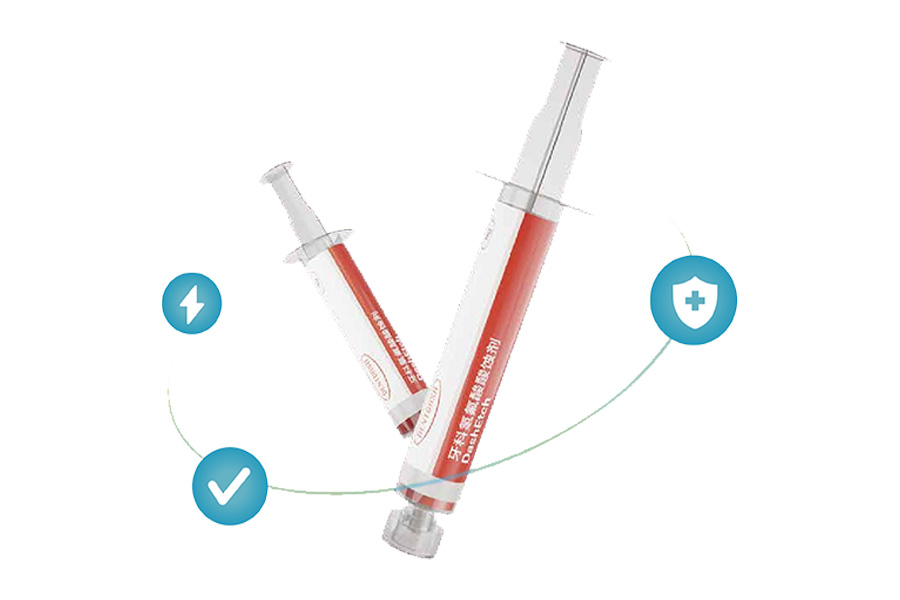
Dental hydrofluoric acid etchant
A hydrofluoric acid etching gel specifically designed for etching the bonding surfaces of glass-ceramic restorations (leucite, lithium disilicate, ceramic, PFM) to increase micromechanical retention.
Core Features
- Safe formula
- Contains 3.5% Hydrofluoric acid (HF)(Safer than the common 9% concentration)
- Buffered acid etching system
- High Etching Capability
- Lithium disilicate bond strength data (without silane treatment): Treatment Bond Strength (MPa) Unetched (Control) 1.1 Brand A (9% HF, 20 seconds) 10.4DashEtch (3 seconds)9.1DashEtch (20 seconds)11.2
- Clinical advantages
- Homogeneous gel does not overflow, and semi-gel texture prevents needle clogging
- No residue after rinsing
Procedure
- After the restoration is tried on: Rinse the bonding surface with clean water and dry thoroughly.
- Etching agent coating:
- Select etching time according to the material of the restoration (generally 20-60 seconds, refer to the manufacturer's instructions).
- Clean thoroughly:
- use Pressurized water flushing Restoration.
- Drying:
- Oil-free air drying。
- Subsequent steps: silanization and bonding are performed in sequence.
Key Knowledge: Clinical Limitations of Hydrofluoric Acid Etchant
Zirconia restorations cannot be etched with hydrofluoric acid!
- Reason: Zirconia does not contain glass components and cannot be effectively etched by hydrofluoric acid.
- Alternatives:
- use 50 micron aluminum oxide sandblasting Roughen the surface.
- Rinse with clean water and dry with oil-free air after sandblasting.
Etching effect comparison (lithium disilicate)
| State | Processing | Appearance characteristics |
|---|---|---|
| Not etched | Unprocessed | Smooth surface |
| Normal etching | DashEtch (20 seconds) | Evenly matte surface, natural color |
| Over-etching | Brand A Etchant (20 seconds) | White precipitate, stains are difficult to remove |
Tip: Excessive etching will affect the appearance and strength of the restoration.
Safety Warning
- Glass ceramics only: It is forbidden to use on non-glass substrates such as zirconia and metal.
- Operational protection: Need to wear Nitrile gloves(Latex gloves do not protect against hydrofluoric acid penetration).

